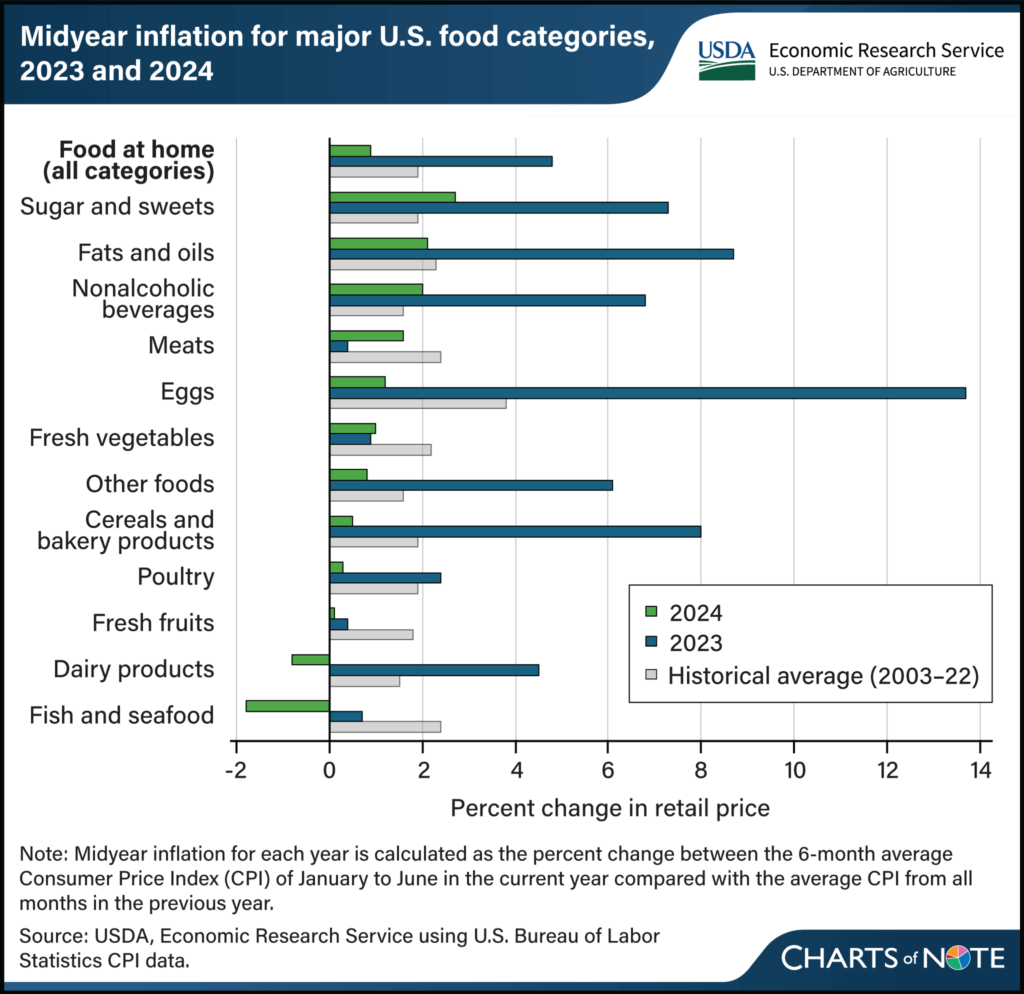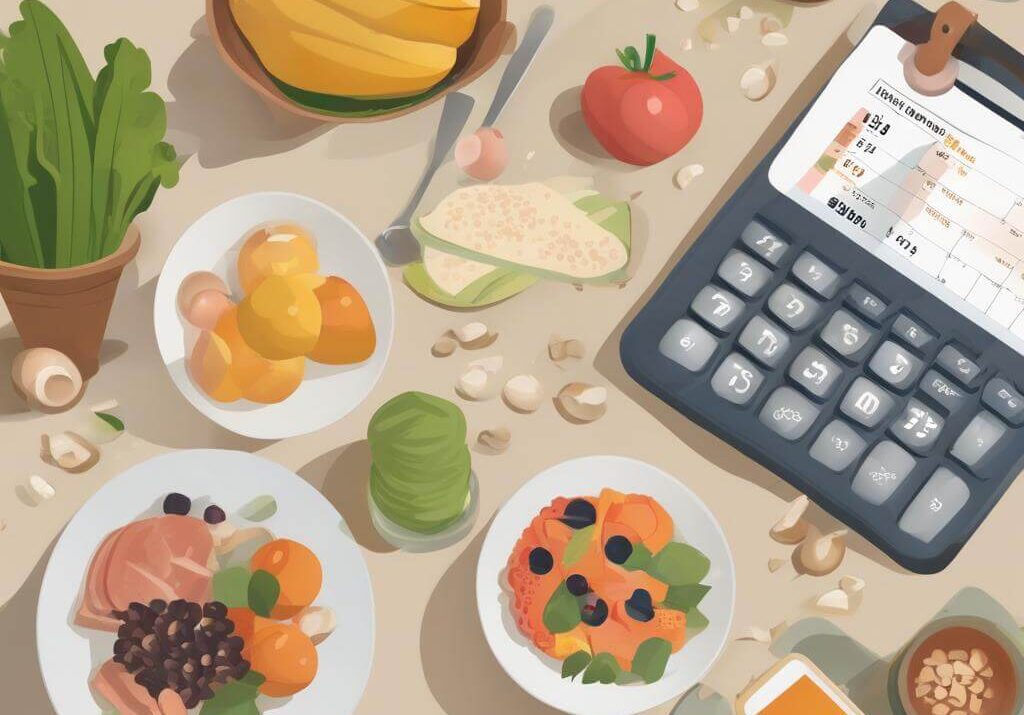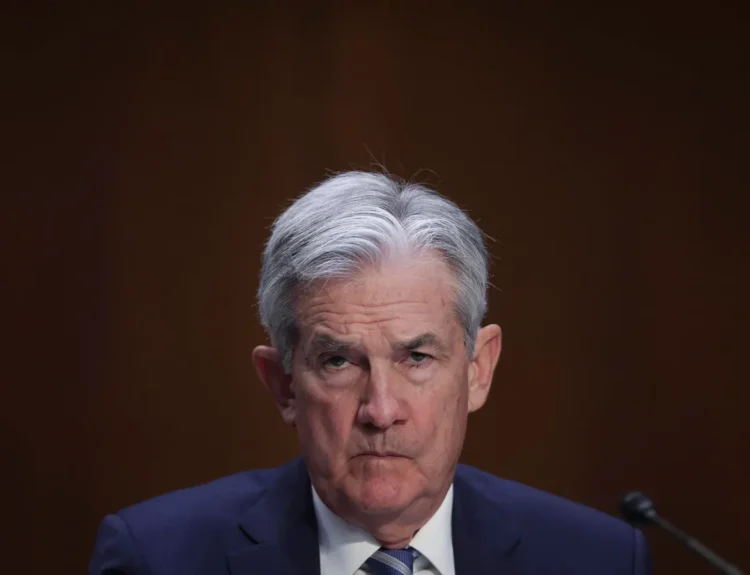Managing your food budget is challenging, especially with the current inflation rates. The rise in food prices over the past few years demands strategic budgeting. This is highly important for people living alone to gain financial stability. Figuring out the average budget depends on different factors like lifestyle, location, and food preferences. This blog will highlight these factors and provide tips on how to maintain a monthly food budget for 1 person.
Average Monthly Food Budget for 1 person in 2025
The average monthly food budget for 1 person ranges between $238.46 and $434.33. Though Consumer Price Index (CPI) reports showed stability in grocery prices as compared to the previous years, the overall increase requires thoughtful planning. The budget can vary depending on the age groups and specific preferences or requirements.
Gender is another interesting factor when we talk about the average monthly budget. Male adults spend slightly more on food than females; hence, the budget can increase. On average, an adult male budget falls between $275.63 and $434.33, while the average for an adult female ranges from $238.46 to $384.93.
Is Monthly Grocery Purchase Better than Eating Out?
A common question related to budgeting is to decide whether grocery purchases are better than eating out. Eating out is more expensive for an average monthly budget for one person. Preparing food at home is budget-friendly, while CPI reports a 2% increase in food outside the home.
Here is the breakdown of both options to better understand the difference and make an informed choice.
Cooking at Home
- Cost Efficiency: Generally, cooking at home saves money. For example, a homemade dinner can cost as little as $3–$6 per serving, depending on the meal.
- Healthier Options: When you cook at home, you can control portion sizes, ingredients, and overall nutritional value.
- Food Waste: Meal planning can significantly reduce food waste, especially if you cook in bulk or use leftovers efficiently.

Eating Out
- Convenience: It’s more convenient and saves time, especially for individuals with busy schedules.
- Higher Costs: On average, a meal at a mid-range restaurant costs $15–$20, which adds up quickly if done regularly.
- Variety: You get to experience a variety of foods without the hassle of preparation and cleanup.
Are Food Costs Increasing?
Yes, food prices are increasing. Since the onset of the pandemic, prices for staple groceries and everyday food items have fluctuated unpredictably. Price increases vary significantly across different food categories. The region is an important factor as well. However, a common rise has been noticed in the following food items;
- Beef
- Vegetables and Fruits
- Sugar and substitute
- Cereals and Bakery Products
- Non-Alcoholoicoic Beverages
Some of the products experienced price hikes of as much as 50%.

Here are some common reasons for increasing food costs:
- Weather Effects: The extreme heat and rain destroyed many crops in the region. This also delayed the crops.
- Supply Chain Disruptions: Global events like pandemics and geopolitical tensions have disrupted food production and distribution.
- Increased Demand: The economic growth enabling people to buy more has also increased the demand for food items.
- Labor Costs: Higher wages and labor shortages contribute to increased prices in restaurants and grocery stores alike.
Factors Affecting Monthly Food Budget for 1 Person
Several factors affect the average food budget for 1 person. Some important factors to consider are:
- Location: Living in a metropolitan area versus a rural region can significantly impact grocery bills. Urban centers generally have higher food costs due to less competition and choices.
- Dietary Choices: including premium products in the grocery list can increase the budget. Similarly, food preferences like vegan, organic, or specialty diets typically lead to higher monthly expenses.
- Eating Habits: eating out regularly or including canned ready-made food in the home cooking can raise the food budget sharply compared to someone who primarily cooks at home from scratch.
- Shopping Habits: Those who shop for groceries without a plan may spend more on impulse purchases or end up with food waste.
Ways to Maintain Monthly Food Budget for 1
After deciding the average food budget for one person, it is important to incorporate smart strategies to shop according to the monthly food budget. Listed below are some practical ways to maintain a budget;
- Plan a meal for the week.
- Make a list accordingly to avoid impulsive shopping. Buy in bulk.
- Cook in batches to save time and money.
- Shop from local and generic brands rather than investing in big names.
- Search the cheapest grocery store around you.
- Take advantage of sales, coupons, and discount offers.
- Buy seasonal fruits and vegetables.
- Limit eating out. Allocate a particular amount for dining outs, and do not exceed the budget.
- Avoid food wastage and properly store leftovers.
Monthly Food Budget for 1: Conclusion
Considering the inflation, planning a monthly food budget for 1 person is highly important. This helps to cut down extra expenditure on groceries and strategically plan your expenses. Budgeting depends on various factors like eating habits and region. Through strategic planning and smart budgeting, grocery shopping can be a fun activity, rather than a chore.
Sources:
- https://www.ramseysolutions.com/budgeting/average-cost-of-groceries?
- https://www.usatoday.com/money/blueprint/credit-cards/average-grocery-cost/
- https://www.nerdwallet.com/article/finance/how-much-should-i-spend-on-groceries
- https://www.bls.gov/opub/reports/consumer-expenditures/2022/home.htm
- https://greenlight.com/learning-center/budgeting/how-much-are-groceries-per-month
- https://www.topnutritioncoaching.com/blog/cost-of-eating-out-vs-eating-in










